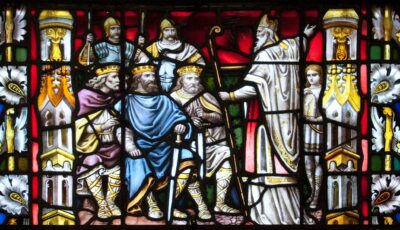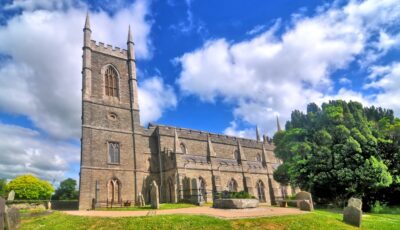St. Patrick’s Day commemorates the Christianization of Ireland in the 5th century by Maewyn Succat, a Scotsman who came to evangelize the island. If the name doesn’t ring a bell, that’s perfectly normal: this Scotsman is better known as Saint Patrick.
It was thanks to his action that Ireland converted to Christianity. Among his many “exploits”, he is said to have convinced the King of Ireland using an Irish shamrock: the plant enabled him to present the concept of the “Holy Trinity” (Father, Son and Holy Spirit).
Today, history and myth are intrinsically linked when it comes to talking about the saint. But it’s also the occasion for the Irish to celebrate every March 17, to pay tribute to his work.
Here’s what the Irish know about him…

Saint Patrick – jaqian – cc
Saint Patrick, whose real name was Maewyn Succat, was born in Scotland around 385, the son of a Roman centurion from Great Britain.
Abducted at the age of 16 by pirates, Maewyn was sold into slavery to a druid in what is now Ulster, Ireland. For 6 consecutive years, he worked as a shepherd for an Irish clan chief. It was at this time that he discovered religion, and became a practicing Christian.
In 409, he managed to escape after God told him, in one of his dreams, to go ashore and board a ship. He reached the English coast and decided to become a priest.
A few years later, he moved to the islands of Lérins, near Cannes in France, and settled in the monastery of Saint-Honorat, where he devoted himself to theological studies for 2 years.

Saint-Pätrick explaining the concept of the Holy Trinity – Andreas Franz Borchert- cc
It was then that Pope Celestine I contacted him and ordered him to return to Ireland.
His objective was clear: he had to evangelize the country, confront the Druids and convert the Irish to Christianity.
Faithful to his commitments, he accepted his mission and returned to Ireland in 411 to try to evangelize its inhabitants and bring the Irish out of their Druidic “wanderings” to convert them to Christian precepts.
To do so, he met many influential figures in the Irish country, including King Aengus. According to the writings, St Patrick then tried to explain the concept of the trinity (Father, Son and Holy Spirit) to the king using a shamrock.
In his view, the three-lobed plant was a perfect illustration of the Christian religion, which convinced King Aengus and marked the beginning of his conversion. (The metaphor was so striking at the time that Ireland decided to make the shamrock its national symbol, a symbol that remains to this day.
This act resonated throughout Ireland: the king’s evangelization was a major step in St. Patrick’s work of Christianization, and the spread of the Christian religion soon took on a new dimension.
Legend has it that it was at this time that Saint Patrick drove all the snakes out of the country, an action symbolizing the Irish people’s conversion to Christianity. He was soon ordained bishop and took the name Patricius (Patrice or Patrick in Latin).

Down cathedral – © robnaw
After many years of evangelizing, the evangelist retired to Downpatrick, where he died on March 17, 461.
He is buried alongside St. Brigid and St. Columcille, both patrons of Ireland. By the time of his death, the whole of Ireland was Christian: St Patrick had ensured the country’s global conversion. A titanic task.
His role was considered so decisive in Ireland’s religious life that the Irish dedicate a national holiday to him every year, known as“St Patrick‘s Day”…
The program includes a host of festivities, parades, Irish beer-fuelled evenings and cultural events that delight the local population every year! The festival has even spread beyond Ireland’s borders: it is celebrated in the United States (by a strong local Irish community, notably in New York, Boston and Chicago), but also in other countries around the world.
Thousands of travellers even head to Ireland to celebrate March 17 with the Irish. The event is always eagerly awaited, and is an opportunity to celebrate the history of Saint Patrick, as well as Irish culture.